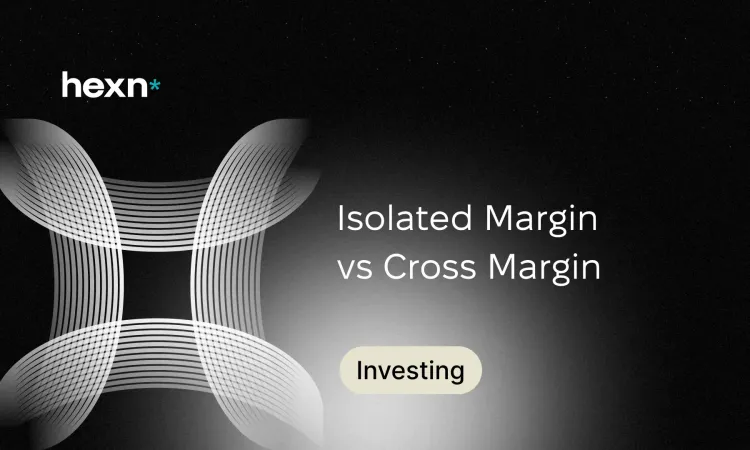Isolated Margin vs Cross Margin
What Is Margin Trading?
Margin trading lets traders borrow funds to take larger positions than their cash balance would allow. This can magnify both gains and losses, so understanding different margin modes helps you manage risk and decide how actively to oversee positions.
How Leverage Changes Outcomes
Imagine you have $5,000 and expect a 20% rise in an asset. Investing only your capital would turn $5,000 into $6,000 — a $1,000 gain. If you use 5:1 leverage, your buying power becomes $25,000. A 20% rise on that position yields $5,000 profit; after repaying the borrowed $20,000, you keep $10,000 — a 100% return on your $5,000. The flip side: a 20% drop could wipe out your entire $5,000 stake. Real trading also includes fees and interest, which reduce net returns.
How Isolated Margin Limits Losses
Isolated margin confines the collateral for a trade to a defined portion of your account. You choose how much capital backs that position, and only that allocation faces liquidation risk. For example, with a 10 BTC account you might assign 2 BTC as isolated margin to a leveraged Ethereum trade. If that trade goes badly, the maximum loss is the 2 BTC you put up — the remaining 8 BTC stays protected from that specific position.
How Cross Margin Pools Balance to Support Multiple Positions
Cross margin treats your full available balance as shared collateral across all open trades. Gains in one trade can be used automatically to cover losses in another, reducing the chance of an isolated liquidation. Using the earlier 10 BTC example, the entire balance would be available to support any losing position — but if combined losses exceed the total account, you can lose the whole balance.
Key Differences Traders Search for
- Collateral and liquidation: Isolated margin puts only the allocated amount at risk for a trade; cross margin exposes your full account balance to margin calls and liquidation.
- Risk management: Isolated margin enables per-trade risk limits; cross margin centralizes risk and can help hedge across positions.
- Flexibility: Cross margin automatically draws on available funds to prevent liquidation, while isolated margin requires manual top-ups to increase protection.
- Use cases: Use isolated margin when you want strict loss limits per trade; use cross margin when you manage multiple positions that may offset one another.
Pros and Cons of Isolated Margin
- Pros: Predictable maximum loss, clearer P&L for each trade, and easier compartmentalization of risk.
- Cons: Requires closer monitoring, limited automatic support from other funds, and higher management overhead when running many isolated trades.
Pros and Cons of Cross Margin
- Pros: Automatic use of available balance to reduce individual liquidations, simpler handling of many positions, and potential to offset losses with gains across trades.
- Cons: Greater chance of a total account loss if multiple positions go against you, less granular control over each trade's exposure, and the risk of over-leveraging.
A Practical Strategy that Mixes Both Margin Types
Some traders combine both approaches: allocate a portion of capital to an isolated margin trade where you want capped downside, while using cross margin for the remainder to run hedges or multiple positions that can offset each other. For example, you might put 30% of capital into an isolated long on a conviction trade and use the other 70% in cross margin to hold several hedging positions. This approach needs active monitoring and periodic adjustments.
Choosing the Right Margin Mode
Decide based on your risk tolerance, the number of simultaneous positions, and how much time you can spend managing trades. If you prefer strict loss limits and per-trade clarity, isolated margin often fits better. If you want a hands-off margin buffer across many positions and intend to hedge, cross margin may be more appropriate.
Final Notes
Margin trading amplifies outcomes in both directions. Before using leverage, understand fees, financing costs, and liquidation rules for your platform. Only risk capital you can afford to lose and consider paper-trading or small tests before scaling positions. This content is educational and not financial advice.
